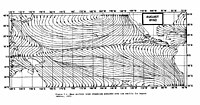
Photo from wikipedia
This study investigated the relationship between the duration of the western North Pacific (WNP) tropical cyclone (TC) quiescent periods (no TC in the period) and the super El Niño events… Click to show full abstract
This study investigated the relationship between the duration of the western North Pacific (WNP) tropical cyclone (TC) quiescent periods (no TC in the period) and the super El Niño events during 1951–2016. The results show that the average duration of the TC quiescent period (DTCQP) is shorter (90 days) during super El Niño developing (EN) years, compared with the 1951–2016 mean DTCQP (105 days). However, in the four super El Niño decaying (EN + 1) years, the DTCQP is about 200 days, which is much longer than the 1951–2016 mean DTCQP. Further study suggests that the delayed super El Niño impacts on the DTCQP in the year following the El Niño peak is due to the persistence of the WNP anomalous anticyclone (WNPAC), which is enhanced during the mature phase of El Niño but maintained through the subsequent spring and summer. The anomalous development and persistence of the WNPAC significantly influences the monsoon trough activity, which leads to delayed and weak development of the monsoon trough in the summer of super EN + 1 years. From April to June of the super EN + 1 years, there is almost no monsoon trough activity over the WNP and the large‐scale environmental conditions are unfavourable for TC genesis. In contrast, from April to June in the super EN years, the WNP is dominated by anomalous cyclonic circulation, which leads to early and strong development of the monsoon trough. The intensified and eastwards extended monsoon trough seems to coincide with favourable environmental conditions for TC genesis.
Journal Title: International Journal of Climatology
Year Published: 2019
Link to full text (if available)
Share on Social Media: Sign Up to like & get
recommendations!